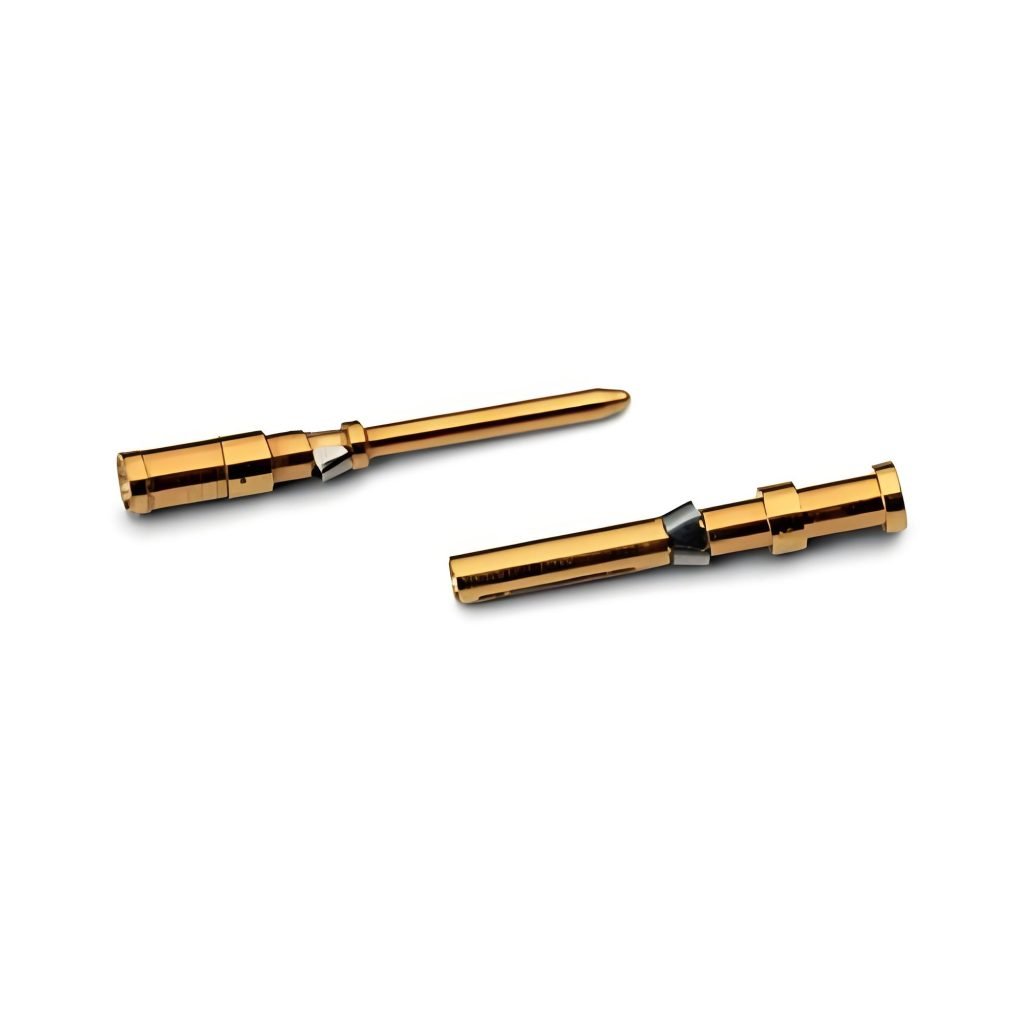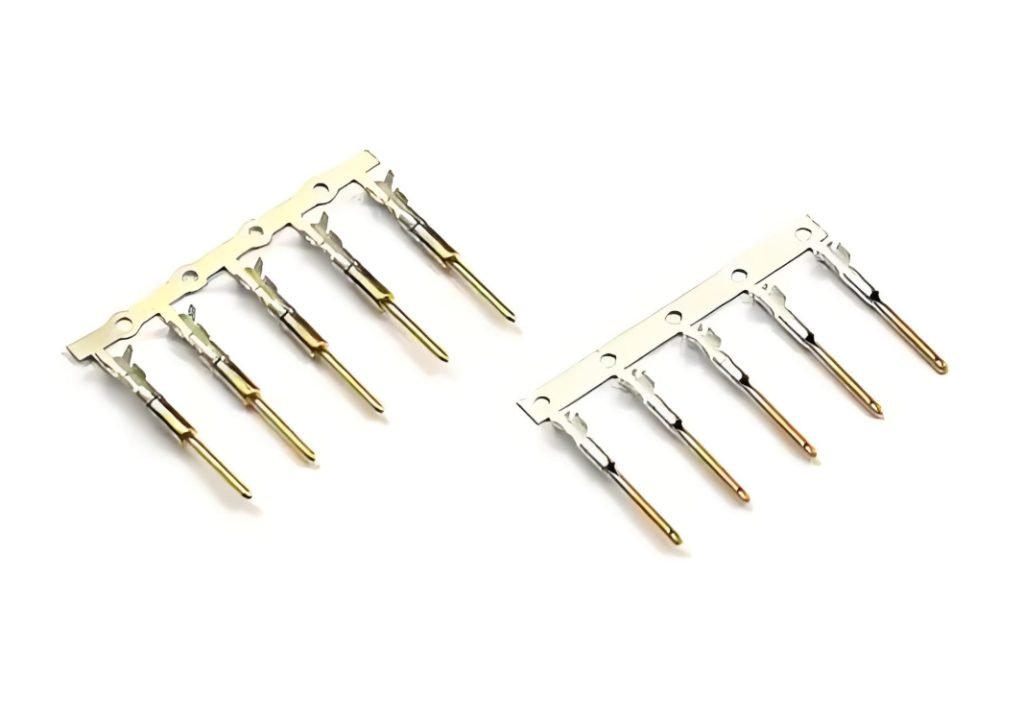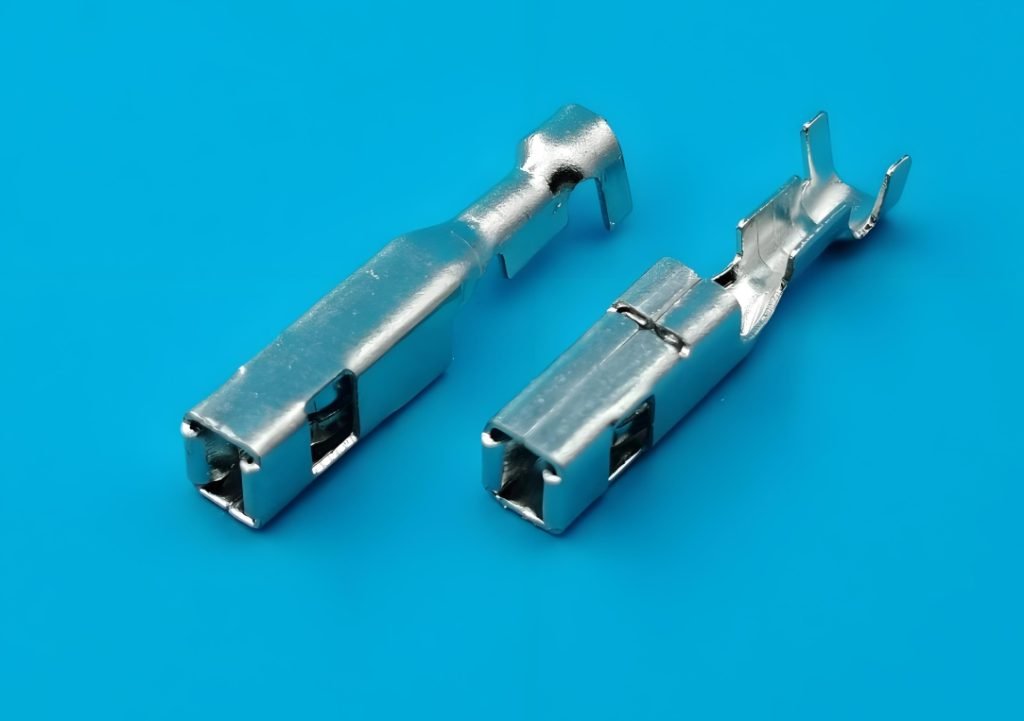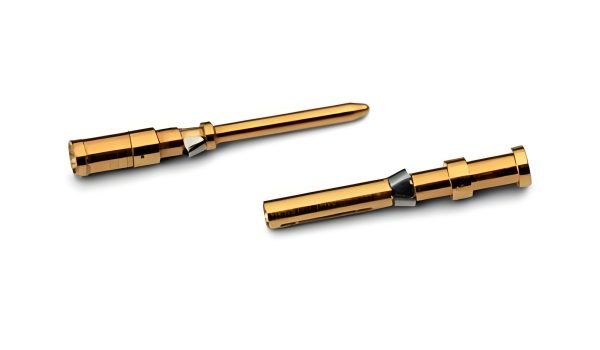When it comes to electrical connectors, choosing the right connector contacts can make or break the performance of your entire system. Whether you’re building high-frequency devices, automotive circuits, or industrial equipment, the wrong connector contact can lead to signal loss, overheating, or perhaps total failure.
That’s why understanding how to choose the right connector, along with their materials, coatings, and current ratings, is essential.
In this guide, we’ll focus on what truly matters: helping you select the right connector contacts based on your application’s unique needs.

What are Connector Contacts?
Connector contacts are the conductive elements within a connector that establish the electrical connection between two or more devices. They are the core interface through which current or signals pass, making them the most critical components of any connector system.
These connectors come in male (pins) and female (sockets) forms, which work together to create a secure and efficient connection. These types are often referred to as connector terminals, a term that covers the full range of physical contact points within a connector.
The materials used for connector contacts are typically copper alloys due to their excellent electrical conductivity, mechanical strength, and corrosion resistance. To enhance performance and durability, these contacts are often plated with metals like gold, silver, or tin, each offering advantages based on application needs.
How to Choose the Right Connector Contact

Choosing the right connector contact involves evaluating your application needs down to the electrical, mechanical, and environmental levels. Below, we’ll break down the key considerations to ensure optimal performance, reliability, and longevity.
1. Current Rating and Voltage
One of the first things to consider is how much current (amperage) the connector contact will carry and at what voltage. If it can’t handle the electrical load, it may overheat, arc, or fail altogether.
Pro Tip: Always choose contacts rated 20 to 30% higher than your application’s normal load to allow for surges and safety margins.
2. Contact Resistance
Contact resistance is the resistance to the flow of current through the contact interface. Lower contact resistance means a successful electrical transmission with less heat and power loss.
The typical values for it range from 0.5 to 5 milliohms, depending on material and contact design. Over time, the corrosion or wear increases resistance, which affects performance significantly.
A higher contact resistance can lead to voltage drops, reduced signal strength, or heating at the connection point, so it is important to keep it low and stable.
3. Size and Pitch
Size refers to the physical dimensions of the contact, while pitch is the distance between the centers of adjacent contacts. Large contacts usually support high current, while smaller contacts are more suited for compact or low-power applications.
Moreover, pitch spacing becomes crucial in high-density or miniature connectors; if it’s too tight, you risk crosstalk or arcing under high voltage.
Make sure your connector fits within your design footprint and that the contacts are spaced out to prevent interference.
4. Mating Cycles
Mating cycles refer to how many times a connector can be reliably connected and disconnected before performance degrades.
- Standard contacts might offer 100 to 500 cycles.
- High-performance or gold-plated contacts can exceed 1,000 to 5,000+ cycles.
Applications with frequent unplugging (like testing or field equipment) require high-cycle contacts with durable plating to resist wear and maintain stable electrical contact.
5. Operating Temperature and Environment
Contacts must withstand not only electrical loads, but also environmental stresses such as high temperature.
Therefore, always verify that the contact material and plating can handle the system’s operating temperature. Most industrial contacts operate in the range of -55°C to +125°C, but specialized versions go higher.
For harsh environments (e.g., automotive, aerospace, outdoor IoT), opt for sealed connectors and corrosion-resistant materials like gold or nickel-plated contacts.
6. Signal Integrity
When transmitting high-speed data or sensitive signals, maintaining signal integrity becomes a top priority. If the contact is poorly designed, it can introduce noise, jitter, or signal reflections.
Moreover, plating and geometry affect signal transmission; gold plating is preferred for low contact resistance and stable impedance.
If your system deals with RF, USB, HDMI, or other data protocols, ensure the contact design supports proper shielding, minimal crosstalk, and consistent impedance.
Mistakes to Avoid When Choosing Connector Contacts
Before wrapping up, it’s important to be aware of common mistakes that can lead to poor performance or the failure of your electrical connections.
1. Overlooking Plating Compatibility
One of the most overlooked issues is choosing connector contacts with incompatible plating materials. For instance, if you pair a gold-plated contact with a tin-plated one, you can trigger galvanic corrosion.
This can reduce conductivity, weaken the connection, and eventually cause the entire system to fail. To avoid this, always match the plating on both the male and female contacts.
2. Underrating Current Needs
Another common mistake is selecting a connector contact that isn’t rated for the amount of current your system will use. Even if the connector works initially, pushing more current than it’s rated for can cause overheating, melting, or fire hazards in extreme cases.
Always monitor the current rating of your connector contact. Factor in the actual load, possible surges, and how long the system will run continuously.
3. Not Considering Environmental Sealing
Many users forget to consider where and how the connector will be used. If it’s exposed to dust, water, humidity, chemicals, or extreme temperatures, then choosing an unsealed connector can lead to corrosion, short circuits, or total failure.
To prevent this, choose connectors with proper IP ratings and built-in seals like rubber gaskets or O-rings for outdoor or industrial use. Leading electrical connector manufacturers offer a wide range of ruggedized options for these environments.
Manufacturing Methods of Connector Contacts
Different connector contacts are manufactured through different manufacturing methods. Here are the most common techniques used in the industry:

1. Metal Stamping
Stamping is a high-speed process where flat metal sheets (typically copper alloys) are cut and shaped using dies. This method is cost-effective for high-volume production and allows tight tolerances and consistent quality. It’s widely used for contacts in consumer electronics, automotive connectors, and industrial equipment.
2. CNC Machining
CNC machining is used for producing precision contacts from metal rods or bars. This method is ideal for low- to medium-volume production where extreme accuracy is needed, such as in medical devices, aerospace, or high-performance electronics. Machined contacts often feature tighter tolerances and smoother finishes compared to stamped ones.
3. Plating
After forming, contacts undergo surface plating to enhance conductivity, wear resistance, and corrosion protection. Common plating materials include:
- Gold: Offers superior conductivity and corrosion resistance, ideal for low-voltage or signal applications.
- Tin: More cost-effective and suitable for high-current, low-cycle applications.
- Silver: Excellent conductivity, often used in high-power connectors.
4. Forming and Bending
Once stamped or machined, some connector contacts require additional forming or bending to meet specific geometric specifications for insertion or mating performance. These steps are carefully controlled to avoid stress or cracks in the material.
Ready to Choose the Right Connector Contacts?
Whether you’re designing high-performance injection mold parts or building a durable electronic product, choosing the right connector contacts is crucial. They can make or break your design, especially in harsh environments.
At Fecision, we understand how critical every detail is. With years of expertise in mold tooling, CNC machining, and full-scale molding services, we ensure that every part you produce is manufactured with precise standards.
Get in touch to explore how we can support your next project with high-quality components!




